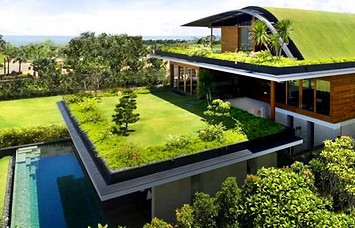PERMACULTURE DESIGN






RREVDR INNOVATIVE INTEGRATIVE ENGINEERING PROCESS
RREVDR has truly created an elite design team of green architects, permaculture designers, sustainable community planners, landscape architects, hydrologists, geologists, solar and hydroelectric engineers, agriculture scientists, soils scientist, biologists, structural engineers and land use consultants. Every aspect of a building design system from purpose, application and execution must compliment, enhance and support the ecosystems in an integrative engineering whole system design.
Strict emphasis applies a Natural Resource Management System and Conservation Biology System where all natural resources such as land, water, soil, plants and animals are managed in land stewardship programs that protect and preserve the biodiversity of species, their habitats and ecosystems and improves the quality of human life for both present and future generations.
Our integrative engineering ensures that residential and industrial green building systems, agricultural systems, renewable energy systems, water harvesting, water treatment & water delivery systems, biological sewage systems and recycling systems are all created in a whole systems integration that compliments and improves the way people, permaculture designs and natural landscapes interact.
1. Land & Nature Stewardship
a. Land Use Responsibility
b. Natural Resources Management
b. Improve the Ecosystems
c. Create a Model for Ecovillage Replication
d. Apply Whole Systems Thinking

2. Permaculture Design
a. Mimic Patterns & Relationships in Nature
b. Maintain the 3 Ethics of Permaculture
1. Earth Care
2. People Care
3. Fair Share
c. Practice the 7 Domains of Permaculture Action
1. Building
2. Tools and Technology
3. Education and Culture
4. Health and Spiritual Well-Being
5. Finances and Economics
6. Land Tenure and Community Governance
7. Land and Nature Stewardship
d. Apply the 12 Principles of Permaculture
1. Observe & interact
2. Catch & Store Energy
3. Obtain a Yield
4. Apply Self-Regulation & Accept Feedback
5. Use & Value Renewable Resources & Services
6. Produce No Waste
7. Design From Pattern to Details
8. integrate Rather than Segregate
9. Use Small & Slow Solutions
10. Use & value Diversity
11. Use Edges & Value the Marginal
12. Creatively Use & Respond to Change

3. Water Harvesting Integration
a. River, Canal, Creeks, Wells, Reservoir Lake
b. Water Resources Management
c. Treatment & Distribution System
d. Instream & Return Systems
e. Keyline, Pond and Swale Integration
e Storage, Filtration, Recycling
j. Scenic & Natural Looking Water Channel Distribution
1. Rogue River Diversion Channel
2. Farming Water Channel
3. Potable Water Channel
4. Municipal Water Channel
5. Hydroelectric Water Channel
6. Reservoir Lake Water Channels
7. Rogue River Water Return Channel

4. Green Building Sustainable Architecture Principles
a. Green Materials, Earth’s Natural Resources
b. Energy Efficient Tools & Technology
c. Using Land Responsibly
d. Green Home Building Plan Packages
e. Green HOA Compliancy Enforcement
5. Solar, Hydroelectric & Battery Power 3 Tier System
a. Control Station Master Control Multi Switching System
b. Smart Grid Control Station Tied to Smart Meters
c. Net Zero Energy Production
b. Power Expansion Growth Capability
d. Off Grid Energy Storage & Excess Energy Grid Return

6. Organic Sustainable Agriculture
a. Interactive Systems in Farms/Gardens/Orchards/Green Houses
b. Design Eco Systems that Imitate Nature
c. Agroforestry & Biodynamic Agricultural Techniques & Methods
d. Enhance Environmental Quality and the Natural Resource Base
e. Make the Most Efficient Use of Non-Renewable Resources
f. All Energy Supplies are Renewable Sources
g. Develop Valuable & Sustainable Aquatic Ecosystem
h. Sustain the Economic viability of al Agriculture Operations
i. Collaborate Agricultural Technologies with Strategic Partners
j. Participate in Agroecology Research & IP Development
k. Develop New Components of Conservation Agriculture Practices
l. Integrate CSA & Farmers Market into Local Food Distribution

7. Organic Sustainable Ranching
a. Organize Sustainability Plan, Habitat Conservation Plan
b. Expand Permaculture Strategy in All Sustainable Systems
c. Apply Management Focus on Environmental, Social, & Economic
d. Adapt Operations/Building/Management for Improvement
e. Adopt Sustainable Ranching Practices that Apply To the Focus
f. Create local Conservation District & State Coalition Relationship
g. Design Components Having Multiple Function for Each Element
h. Using Biological Resources & Recycling Energy & Nutrients
i. Maximize Diversity by Increasing Symbiotic Relationships
j. Imitate Nature Mimicking Natural Succession

